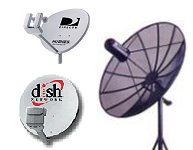|
Personal computers, for example, started with
electronics hobbyists in the 1970s, aircraft were invented
by tinkerers like the Wright brothers, NASCAR began with Moonshiners
racing in the Appalachian hillsides, and so forth.
Rocketry and space exploration concepts also
began with hobbyists in their space societies in the 1920's
and 1930's (see the History
of Space Activism section.) In the post-War era,
however, rockets and spacecraft development became totally
dominated by huge missile programs and the Moon
Race projects.
This top-down development of space
meant the absence of any connection with " real people".
Without organic growth from the bottom, space has not had
a significant base of public participants and enthusiasts
on which to build.
Unfortunately, the space
activist movement, which probably consists of just
50-100 thousand people at best, has not focused on building
up this core base of support. Instead, it has mostly followed
the top-down paradigm of the Apollo period and sought to influence
government policy in hopes that new space projects would be
so exciting they would draw public interest and enthusiasm
to them. This approach has failed.
Big
Dishes lead to Small Dishes and a Very Big Business
While preparing for an appearance on a recent
broadcast of David Livingston's The
Space Show, I looked for an example of hobbyists creating
a space industry to illustrate my belief that public participation
is the key component to developing a genuine spacefaring society.
A great example turned out to be right here
on the HobbySpace website.
The TVRO
(TV Reception Only) section describes the hobby of scanning
satellite broadcasts with ones own satellite dish(es), especially
in the heavily used C-Band part of the radio spectrum.
In the early 1980's people driving in the
US countryside began to notice strange bowl shaped objects
appearing on lawns and hillsides. About 3 meters wide, the
dishes pointed blankly at the sky.
Tinkerers, hams and electronic hobbyists had
begun the satellite TV revolution when they discovered how
easy it was to pick off the signals intended for cable TV
companies (and for miscellaneous other communications such
as video conferences and other intra-company broadcasts of
big corporations).
Distribution of TV programming via satellite
had revolutionized the cable industry in the 1970's, allowing
Hollywood and New York media centers to provide three or four
dozen channels to the cable companies who previously could
only obtain a handfull of channels via terrestrial transmissions.
(See the Geostationary
Satellite section of Space Investing and Cable
TV History: The 1970s - CED Magazine.)
Initally, the home C-band receivers who were
grabbing these programs were often treated as pirates. However,
most of the receivers were in rural areas without access to
cable TV. Eventually the number of C-band
users reached well over a million in the US.
Seeing this large market, companes like Hughes
and Echostar were motivated to begin their Ku band direct-to-home
(DTH) TV satellite services that provided hiqh quality digital
signals via small dishes of about half a meter wide.
Initially, they expected the rural areas to
provide most of their market. However, soon many surburbanites,
upset with bad service from their cable TV providers, began
to subscribe to satellite TV, which also provided more channels
than cable and sharper images. There are now almost 20 million
DTH satellite TV subscribers
in the US.
The number of C-band users has dropped to
less than 700, 000 and is expected to continue to drop as
more casual uses switch to the smaller dishes. Eventually
C-band reception willl return to being of interest primarily
to hobbyists (see the TVRO
section.)
However, we can thank the C-band hobbyists
for spawning the hugely successful DTH industry in the US.
We hope to see many more such industries
arise from space hobbies.
|


